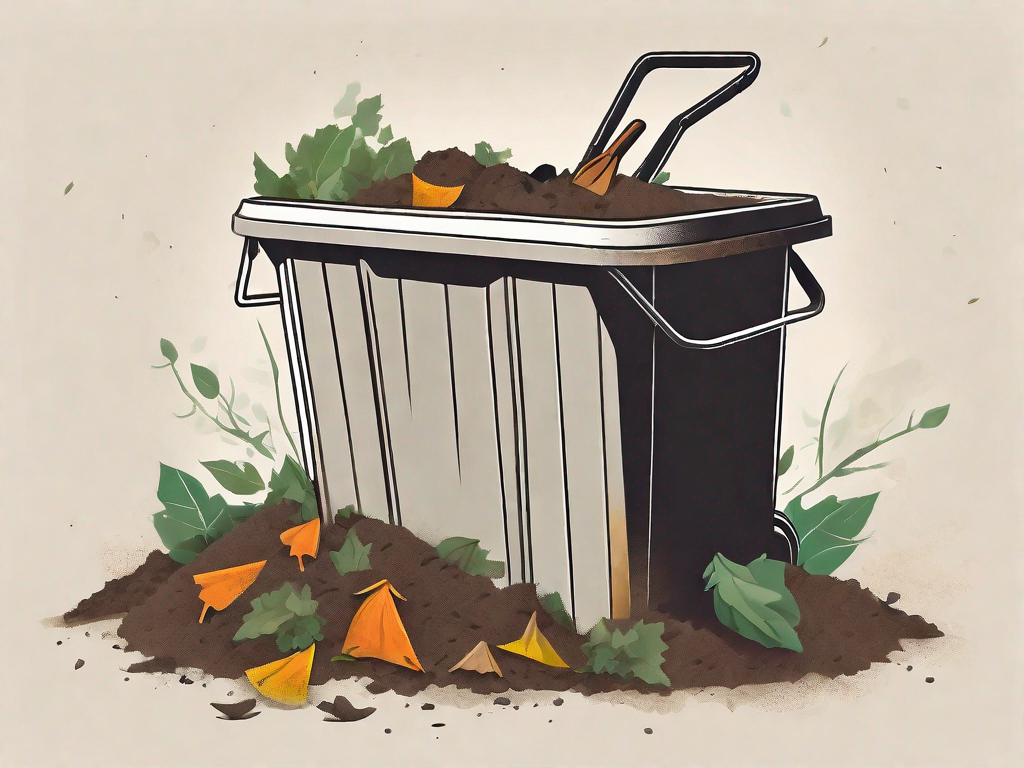Using Sand as a Base for Your Compost Bin Area
Published on: March 27, 2024
Get an estimate for your project in 60 seconds

When planning a compost bin area project, one of the key considerations is the choice of base material. A good base provides stability, promotes drainage, and aids in the composting process. Among the various options available, sand is a popular choice for many homeowners and gardeners. But, can sand be used for a base for a compost bin area project? Let’s delve into this topic.
Understanding the Role of a Base in a Compost Bin Area
The base of a compost bin plays a crucial role in the overall composting process. It serves as the foundation of the compost bin, providing the necessary support and stability. A well-constructed base also ensures proper aeration and drainage, both of which are essential for effective composting.
Moreover, the base can influence the quality of the compost produced. Certain base materials can contribute beneficial minerals and nutrients to the compost, enhancing its value as a soil amendment. Hence, choosing the right base material is of paramount importance.
Why Use Sand as a Base?
Sand, particularly coarse sand, has several properties that make it an excellent choice for a compost bin base. Firstly, sand provides a stable and firm foundation for the compost bin. It is easy to level and compact, ensuring that the bin remains steady and secure.
Secondly, sand is highly permeable, allowing for excellent drainage. This prevents waterlogging in the compost bin, which can lead to anaerobic conditions and hinder the composting process. The good drainage provided by sand also helps control odors, making the composting process more pleasant.
Availability and Affordability
Sand is widely available and relatively inexpensive, making it a cost-effective choice for a compost bin base. Companies like Hello Gravel offer a variety of sand products suitable for different applications, including compost bin bases.
Furthermore, sand is easy to work with and requires minimal preparation. This makes the construction of the compost bin base quicker and less labor-intensive, saving you time and effort.
How to Use Sand as a Base for Your Compost Bin Area
Using sand as a base for your compost bin area is a straightforward process. Here are the steps to follow:
- Choose the location for your compost bin. It should be a flat, well-drained area that is easily accessible.
- Mark out the area for the compost bin. The size will depend on the size of your compost bin and the amount of compost you plan to produce.
- Excavate the marked area to a depth of about 4-6 inches. This will create a recess for the sand base.
- Fill the excavated area with coarse sand. You can purchase sand from a reliable supplier like Hello Gravel.
- Level and compact the sand using a hand tamper or a plate compactor. This will create a firm and stable base for your compost bin.
- Place your compost bin on the sand base. Ensure it is level and secure.
For larger compost bin area projects or if you need assistance, consider getting a quote from a professional aggregate supply company. Hello Gravel offers a convenient online quote form for this purpose.
Considerations When Using Sand as a Base
While sand has many advantages as a base material for a compost bin area, there are a few considerations to keep in mind. Firstly, while sand provides excellent drainage, it may not be suitable for areas with heavy rainfall as it can lead to excessive drainage and drying out of the compost.
Secondly, sand does not contribute any nutrients to the compost. If nutrient enrichment is a goal of your composting process, you may need to add other materials to your compost bin in addition to the kitchen scraps and yard waste.
Choice of Sand
The type of sand used can also impact the effectiveness of the compost bin base. Coarse sand is generally recommended as it provides better drainage and stability. Fine sand can compact too much, reducing aeration and drainage.
When purchasing sand, ensure it is clean and free from contaminants. Companies like Hello Gravel offer high-quality sand products that are suitable for compost bin bases.
Conclusion
In conclusion, sand can indeed be used as a base for a compost bin area project. It provides a stable and firm foundation, promotes excellent drainage, and is easy to work with. However, it is important to consider the local climate and the specific requirements of your composting process when choosing sand as a base material.
With careful planning and the right materials, you can create a compost bin area that is efficient, effective, and environmentally friendly. Happy composting!
Ready to Start Your Compost Bin Project?
At Hello Gravel, we understand the importance of high-quality materials for your gardening and composting needs. Whether you’re looking for the perfect sand base or need other aggregates to enhance your outdoor space, we’ve got you covered with our premium selection and white glove delivery service. Don’t spend time calling around for quotes; let us streamline your project from start to finish. Check out our products today and experience the ease of ordering aggregates online, delivered directly to your doorstep for projects big and small.
Author: alan